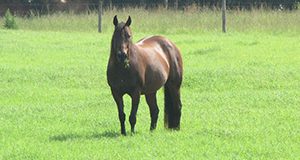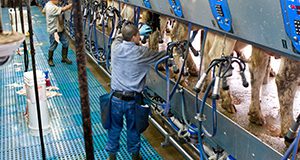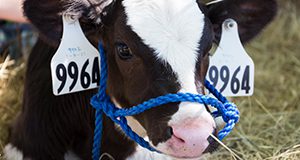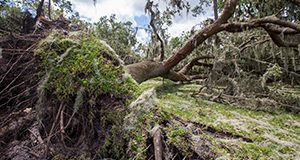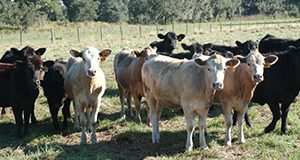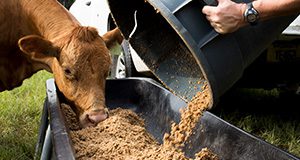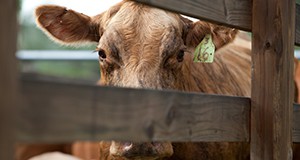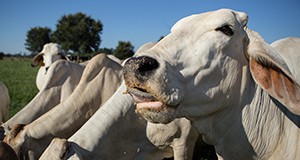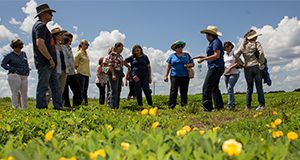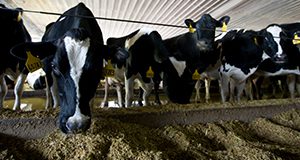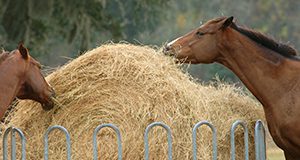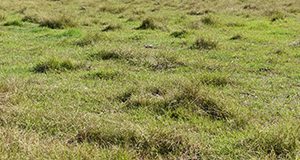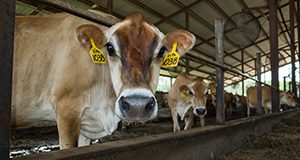This new 4-page document discusses the reproductive consequences of uterine disease in the dairy cow, potential mechanisms, and current treatments. Written by Rachel L. Piersanti and John J. Bromfield, and published by the UF/IFAS Department of Animal Sciences, March 2019.
http://edis.ifas.ufl.edu/an354
Category: Livestock
Economic Selection Indices: The Best Tool for Dairy Cattle Selection
An economic selection index combines multiple traits into a single value, facilitating the identification of the best animals. This new 3-page document discusses economic selection indices, their changes in the US, and a 2018 update. Written by Francisco Peñagaricano, and published by the UF/IFAS Department of Animal Sciences, March 2019.
http://edis.ifas.ufl.edu/an353
La Ley de Modernizacion para la Seguridad Alimentaria (FSMA): Controles Preventivos para los Alimentos de Animales
La Ley de Modernización de la Seguridad Alimentaria (FSMA) se convirtió en ley en enero de 2011 y se considera la reforma más amplia de las normas de seguridad alimentaria en 70 años. Primero, se establecieron las regulaciones sobre alimentos para el consumo humano luego con la contribución de la industria, la academia, y los consumidores y otras agencias, se modificaron para adaptarse mejor a la producción de alimentos para animales. En Florida, estas nuevas regulaciones se aplican a las instalaciones que fabrican, procesan, empacan o almacenan alimentos o ingredientes para animales. El objetivo principal de estas regulaciones es garantizar alimentos seguros para los animales, las personas que manejan el alimento y las personas que consumen productos derivados de animales. This 4-page document is the Spanish version of The Food Safety Modernization Act (FSMA) Preventive Controls for Animal Food. Written by Francisco Rivera, Chad Carr, and Jason M. Scheffler, and published by the UF/IFAS Department of Animal Sciences, February 2019.
http://edis.ifas.ufl.edu/an352
Pastures and Forage Crops for Horses
Florida's unique climatic characteristics allow for forage production most of the year with a large variety of possible forage choices. Independent of the size of the operation and number of horses, good forage planning can help reduce feeding costs, environmental impacts, and nutritional disorders caused by high-concentrate feeding. With the exception of high-performance animals, horses can meet most of their nutritional needs from pasture. However, achieving this requires careful planning and implementation of a forage production and utilization program. This 9-page document discusses intake and nutrient requirements, pasture planning, forage species, and pasture management. Written by M. Wallau, E. L. Johnson, J. Vendramini, C. Wickens, and C. Bainum, and published by the UF/IFAS Agronomy Department, revised January 2019.
http://edis.ifas.ufl.edu/aa216
Overseeding Rhizoma Perennial Peanut Pasture and Hay Fields during the Cool Season
Hay and livestock producers want to know if they can overseed their rhizoma peanut fields with cool-season forages during rhizoma perennial peanut dormancy. This new 5-page document discusses overseeding for hay and overseeding for grazing. Written by Jose Dubeux, Cheryl Mackowiak, Ann Blount, David Wright, and Luana Dantas, and published by the UF/IFAS Agronomy Department, January 2019.
http://edis.ifas.ufl.edu/ag426
The Value of Milk Fat
In the Southeast, milk is priced based on fat and skim milk value, with additional bonuses for somatic cell and bacterial counts. In recent years, butterfat has become more valuable. This 7-page document discusses some of the history behind the changes in milk fat consumption, management factors that influence milk fat content and yield by dairy cattle, and economic implications of changing fat content through the diet in two case scenarios. Written by José E. P. Santos and Albert De Vries, and published by the UF/IFAS Department of Animal Sciences, January 2019.
http://edis.ifas.ufl.edu/an350
Are Cows Comfortable in Modern Dairy Facilities?
The main challenge of modern large dairy operations is to achieve high milk yield per cow without sacrificing health and welfare. Properly designed and managed facilities allow calves, heifers, and cows to be comfortable and successfully grow, mature, maintain health, and reach peak performance. This 8-page document discusses facilities, cow comfort, resting behavior, feed and water access and availability, stocking density, and heat stress. Written by Izabella Toledo, and published by the UF/IFAS Department of Animal Sciences, December 2018.
http://edis.ifas.ufl.edu/an349
Hurricane Impacts on Florida's Agriculture and Natural Resources
Hurricanes are capable of affecting almost everything in their paths. Their strong winds and heavy rains can directly impact both inland and coastal areas in short periods that usually last about a day. This new 10-page document reviews basic facts about hurricanes and their effects in Florida and discusses ways they might affect Florida's agriculture and natural resources. Written by Young Gu Her, Ashley Smyth, Pamela Fletcher, Elias Bassil, Ulrich Stingl, Zachary Brym, and Jiangxiao Qiu, and published by the UF/IFAS Department of Agricultural and Biological Engineering, October 2018.
http://edis.ifas.ufl.edu/ae528
Forage-Based Heifer Development Program for North Florida
Developing replacement heifers to become productive females in the cow herd is a tremendous investment in a cow-calf operation that takes several years to make a return. Fortunately, there are several options to develop heifers on forage-based programs that can help reduce costs while meeting required industry performance targets. This new 4-page document proposes a model for replacement heifer development based on forage research trials at the UF/IFAS North Florida Research and Education Center (UF/IFAS NFREC) in Marianna, FL. Written by Jose Dubeux, Nicolas DiLorenzo, Kalyn Waters, and Jane C. Griffin, and published by the UF/IFAS Agronomy Department, October 2018.
http://edis.ifas.ufl.edu/ag424
Methods of Trace Mineral Supplementation
The forage cattle consume as the bulk of their diet is often deficient in trace mineral concentrations. Cattle producers can choose from a number of different methods to provide supplemental trace minerals to cattle. This 3-page document discusses several common ways to provide trace mineral supplements as well as their advantages and disadvantages. Written by Matt Hersom and Todd Thrift, and published by the UF/IFAS Department of Animal Sciences, October 2018.
http://edis.ifas.ufl.edu/an348
What Is the Economic Impact of Infertility in Beef Cattle?
Producers cannot completely control infertility in their cow herds. However, understanding and addressing the factors that affect infertility will help producers implement management practices that can improve fertility and reduce the negative impacts of infertility on the profitability of beef cow-calf operations. This 4-page fact sheet discusses reasons why beef cows fail to become pregnant or wean a calf, identification of infertile beef cows, and economic impacts of reduced fertility and infertility in beef cattle. Written by Chris Prevatt, G. Cliff Lamb, Carl Dahlen, Vitor R. G. Mercadante, and Kalyn Waters, and published by the UF/IFAS Department of Animal Sciences, revised September 2018.
http://edis.ifas.ufl.edu/an208
How to Measure Body Condition Score in Florida Beef Cattle
Body condition score (BCS) is both a good indicator of the past nutritional status of a cow and a way to determine future nutritional needs. The BCS technique is easy to learn and can help with management decisions. This new 5-page fact sheet discusses reasons to measure BCS, ways to evaluate BCS, and important assessment times. Written by Matt Hersom and Todd Thrift, and published by the UF/IFAS Department of Animal Sciences, August 2018.
http://edis.ifas.ufl.edu/an347
Mycotoxins in Florida Pastures
Beef cattle producers in Florida have expressed concerns about the potential presence of mycotoxins in summer perennial forages. In other regions of the US, mycotoxins in forage crops have caused productivity and economic losses. This 3-page fact sheet provides information about the current state of knowledge regarding mycotoxins in Florida perennial grass pastures. Written by Marcelo Wallau, Brittany Justesen, Ann Blount, Luiz Ferraretto, Glen Aiken, and Aaron Stam, and published by the UF/IFAS Agronomy Department, August 2018.
http://edis.ifas.ufl.edu/ag422
Strip-Planting Rhizoma Peanut into Grazing Systems
Nitrogen (N) is one of the major off-farm inputs in livestock systems, either in the form of N fertilizer or purchased feed. Fortunately, you can reduce those expenses by growing your own nitrogen using forage legumes. Rhizoma perennial peanut (RPP) is a legume adapted to the Florida environment that grows well in mixtures with bahiagrass. This 4-page fact sheet discusses varieties, establishment, weed management, grazing management, and the cost-share program. Written by Jose Dubeux, Lynn Sollenberger, Joao Vendramini, Marcelo Wallau, Ann Blount, Liza Garcia-Jimenez, Erick Santos, and David Jaramillo, and published by the UF/IFAS Agronomy Department, July 2018.
http://edis.ifas.ufl.edu/ag421
Economic Evaluation of Dairy Cow Stocking Density
What is the optimal number of dairy cows in a pen after their transition period? This 4-page document discusses the economically optimal stocking density for lactating dairy cows, measured as maximum profit per stall. It also introduces a spreadsheet that can be used to calculate the effects of various inputs on the economically optimal stocking density. Written by Albert De Vries, Haile Dechassa, and Henk Hogeveen, and published by the UF/IFAS Department of Animal Sciences, August 2018.
http://edis.ifas.ufl.edu/an346
Riesgos Comunes a Considerar Durante la Manufactura de Alimentos para Caballos
El decreto de Modernización de la Seguridad Alimentaria (FSMA por sus siglas en inglés) fue firmado en Enero del 2011. Dicho documento intenta cambiar el enfoque de la seguridad alimentaria hacia prevención en lugar de reacción ante eventos relacionados con alimentos. Determinar si un peligro requiere un control preventivo depende de la frecuencia y la gravedad del peligro, el cual varía de acuerdo a la instalación y la especie alimentada. This 5-page fact sheet is the Spanish version of EDIS document AN344, Common Hazards to Consider During Manufacturing of Feeds for Horses. Written by Ana Margarita Arias, Taylor N. Langford, Carissa Wickens, Lori Warren, and Jason M. Scheffler, and published by the UF/IFAS Department of Animal Sciences, July 2018.
http://edis.ifas.ufl.edu/an345
Common Hazards to Consider During Manufacturing of Feeds for Horses
Horses are uniquely sensitive to fumonisin and ionophores compared to other livestock species. Facilities, particularly mixed-species feed facilities, need to ensure CGMPs, SOPs, and possibly preventive controls are implemented to address those concerns in addition to more general hazards. This 5-page fact sheet discusses common biological, chemical, and physical hazards in horse feeds as well as methods of prevention. Written by Jason M. Scheffler, Taylor N. Langford, Carissa Wickens, and Lori Warren, and published by the UF/IFAS Department of Animal Sciences, June 2018.
http://edis.ifas.ufl.edu/an344
Brunswickgrass or Paspalum nicorae: A Weed Contaminant in Southern Pastures and Bahiagrass Seed Production Fields
Brunswickgrass (Paspalum nicorae Parodi) is becoming a problematic weed in summer perennial grass pastures in the Southeast. The plant is competitive with bahiagrass
and bermudagrass. Since it is less palatable, it can eventually dominate a perennial grass pasture. Brunswickgrass has become naturalized and has reportedly contaminated bahiagrass seed fields and pastures in the southeastern states, including some of the important counties for seed production in Florida, such as Gilchrist, Levy, Alachua, Citrus, and Sumter. This 4-page fact sheet provides an overview of brunswickgrass and discusses its appearance, variety/germplasm, and management. Written by Ann Blount, Marcelo Wallau, Brent Sellers, Dennis Hancock, Leanne Dillard, Jose Dubeux, Cheryl Mackowiak, Joao Vendramini, and Clay Cooper, and published by the UF/IFAS Agronomy Department, April 2018.
http://edis.ifas.ufl.edu/ag408
Common Hazards to Consider During Manufacturing of Feed for Beef and Dairy Cattle
This 6-page document provides a list of common hazards to consider in the manufacturing of cattle feeds. It discusses the importance of preventing hazards, methods of prevention, and common physical, biological, and chemical hazards. Written by Taylor Langford, Matthew Hersom, Luiz Ferraretto, Antonio Faciola, Chad Carr, and Jason Scheffler, and published by the UF/IFAS Department of Animal Sciences, March 2018.
http://edis.ifas.ufl.edu/an343
Economic Feasibility of Cooling Dry Cows: Findings and Spreadsheet
The negative effects of heat stress in lactating cows are well known, but only recent studies have explored those effects along with the full benefits of cooling dry cows. Recent work at the University of Florida has demonstrated the benefits of dry cow cooling on calf performance and cow health in the next lactation. This 5-page fact sheet discusses the economic losses from milk production due to heat stress, investment, utilities, maintenance, and feasibility analysis. Written by Fernanda Ferreira, Geoffrey Dahl, and Albert De Vries, and published by the UF/IFAS Department of Animal Sciences, March 2018.
http://edis.ifas.ufl.edu/an342


